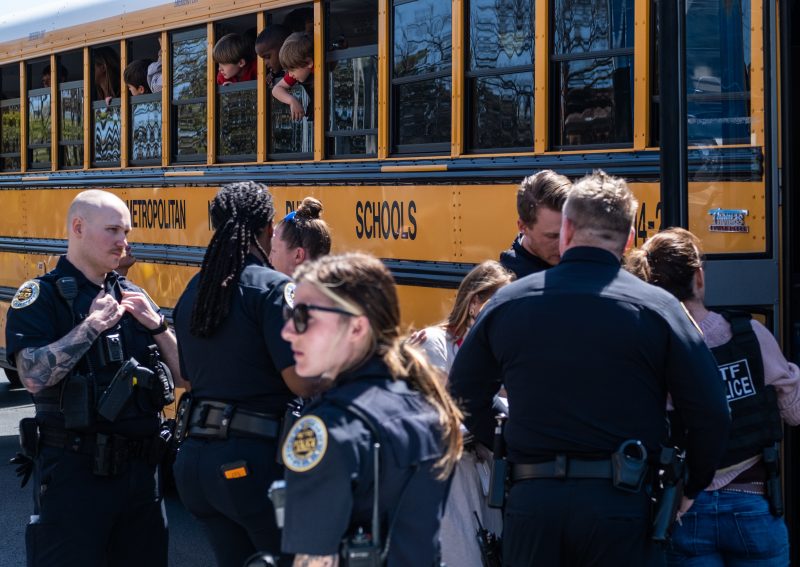Three children who woke up in their beds on Monday morning, who had some breakfast and maybe fussed with their parents over what they’d have for lunch or what they would do after school — three kids whose futures their parents had envisioned with hope or dread hundreds of times — were shot and killed at the Covenant School in Nashville.
In 2020, for the first time, more children in the United States died from firearms than any other cause. This is in part because the number of children dying in car accidents has decreased, thanks to decades of focus on keeping children safe and on new regulations aimed at ensuring that vehicular crashes are less dangerous. It is also in part because more children are being shot to death each year, like those three on Monday in Tennessee.
Over the past four decades, the number of children in the United States who are dying has fallen. That’s largely because the number of deaths from accidents has declined.
In 1981, data from the Centers for Disease Control and Prevention indicate that nearly 16,000 Americans ages 1 to 18 died in accidents. About 9,000 of those — more than half — were car accidents. The number of young Americans who died in accidents related to firearms was much smaller, a bit over 500.
Since that time, both numbers have dropped significantly. In 2020, the most recent year for which these data are available, fewer than 3,000 children died in car accidents and only a bit over 100 died because of firearm-related accidents. Both figures were up over 2019, but the long-term trend has been positive.
In both cases, of course, changes in public understanding, better manufacturing and laws have made a difference: Mandated car seats and awareness about proper firearm storage. More information about where children should sit in cars. Legislation covering trigger locks. More kids kept alive as a result.
But deaths from accidents are only a small portion of firearm deaths in this age group. Most of the deaths from firearms for those ages 1 to 18 are homicides, with about a third being suicide. In 2020 in particular and in recent years more generally, the number of firearm homicides within this age range spiked.
That’s the reason that gun deaths passed deaths from automobile accidents in 2020: more kids being slain.
But this is not a statistical fluke. In other peer countries, firearm deaths aren’t even in the running as a leading cause of death. Analysis from KFF shows that firearms are only the fifth-leading cause of death in Canada, behind car accidents, cancer, congenital disease and other types of accidents. In every other comparable country KFF considered, firearms didn’t rank in the top five.
If we consider firearm deaths as a function of population, the United States’ status as an outlier becomes obvious. In peer countries, the rate of firearm deaths each year is 0.3 per 100,000 children. In the United States, it’s more than 18 times as high.
As you might expect, more of these deaths occur among older children. From 2017 to 2020, there were still more than three times as many deaths from car accidents among those ages 1 to 10 as there were deaths from guns. But there were more than 250 deaths in that age group in 2020 alone, more than 1½ times the combined number of firearm deaths for those ages 1 to 19 that same year in peer countries.
I have two children under the age of 10. This dry consideration of the data is how I channel my fear and heartbreak at the deaths of other young kids. It’s how I deal with the pang of guilt I get from my joy at welcoming them home Monday afternoon.
In situations like this, I remember an excerpt from Ta-Nehisi Coates’s book “Between the World and Me,” a book dedicated to his own son. In it, he describes the death of a friend at the hands of police through the lens of being a parent.
“Think of all the love poured into him,” Coates wrote, delineating specific ways in which parents invest in and show their love for their children: music lessons, wear on family cars, birthday parties and kids’ books. Then, he adds: “And think of how that vessel was taken, shattered on the concrete, and all its holy contents, all that had gone into him, sent flowing back to the earth.”
Three times on Monday alone.








